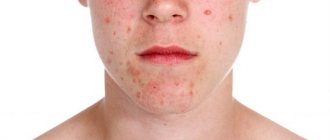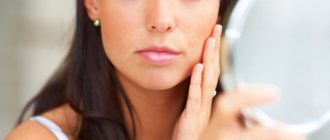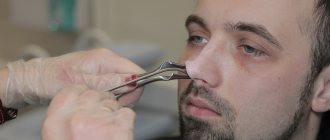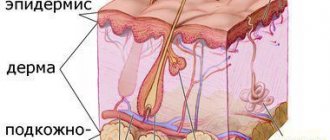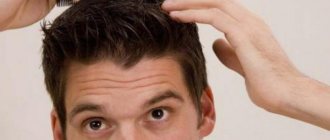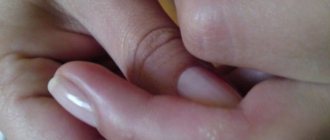Can you imagine that a seemingly ordinary pimple on the nose or on its tip can be fatal? Most likely no. But only if this pimple is not a boil. A boil is a purulent inflammation of the hair follicle, which occurs with unpleasant symptoms and, if not properly treated, can provoke dangerous complications. What do boils look like? For what reason do they appear and how to treat them correctly? You will find the answers in our new article.
Many adult patients think that the most unpleasant diseases of the nasal cavity are associated with inflammation of the mucous membrane of the nose and paranasal sinuses. But that's not true. There are other nasal diseases that occur with unpleasant symptoms, and if left untreated, the risk of developing dangerous complications will increase. One of these diagnoses is a boil in the nose.
A boil is a purulent inflammatory process in the hair follicle or sebaceous gland and nearby tissues of the nose.
According to medical statistics, this diagnosis accounts for up to half of all cases of purulent-inflammatory skin diseases. In the literature you can find other names for the disease - abscess or boil.
The location of the abscess can be different: the tip of the nose, the wing of the nose, the inside of the nasal cavity (internal boil).
A boil on the tip of the nose or on its wing can appear at any age, but most often the disease is diagnosed in adult patients under forty-five years of age. Men predominate among them (almost twice as many as women).
A boil on the tip of the nose, like a boil on the wing of the nose, is a common occurrence. Our respiratory and olfactory organs are always “available” to the negative influence of external factors. While our body is covered with clothes and our head is covered with a hat, our nose is always visible. Yes, and what is there to hide, often we ourselves provoke these very negative factors by picking in the nasal passages, squeezing pimples on the tip or wings of the nose, which can lead to microtraumas and their infection.
In addition to painful symptoms and spoiled appearance, boils can become a source of dangerous complications, including sepsis.
There have been cases when a boil on the tip or wing of the nasal cavity led to death. This is due to late seeking help from an ENT doctor and lack of competent treatment.
A boil is not just a pimple on the tip or wing of the nose. This is a serious diagnosis that requires full treatment in the clinic.
How to treat a boil in the nose in an adult? You will find the answer in our new article: “Causes, symptoms and treatment of boils.”
Pustules are small pustules on the face
A pustule is an inflammatory acne element, inside of which there is a cavity filled with purulent contents. Its size can reach 10 mm. The shape can be cone-shaped, flat, hemispherical. A pustule can form as an independent element or from a papule. When pustules appear on the face, the cause must be sought in the inflammatory process occurring in the skin.
You can tell that a pustule has formed by looking at the white head of the pimple*. Its contents are usually white, yellowish, and sometimes greenish. The contents of the pustule may dry out, a crust will form on top of it, the fall of which may lead to the appearance of a hyperpigmentation spot.
If even small pustules appear on the face, it is necessary to take action, as they can turn into indurative acne. With this form of acne, inflammation spreads into the deeper layers of the skin. Resolution of such acneous elements may leave behind atrophic scars.32
Where to go if your child has herpes
If signs of infection with a herpes infection appear, the child’s parents should contact their local pediatrician at the clinic at their place of residence so that the doctor can immediately prescribe treatment.
To prevent recurrence of infection caused by the herpes simplex virus, a specialist may suggest vaccination.
The doctor will also prescribe medications whose action is aimed at increasing immune defense - interferon and immunostimulants.
Why did pustules appear on the face?
Pimples with purulent contents form against the background of a decrease in the protective function of the epidermal barrier.56
Internal causes that can cause the appearance of pimples* and pustules on the face are56:
- temperature irritants;
- skin contamination;
- dryness of the epidermis;
- exposure to aggressive chemicals, etc.
Endogenous causes include56:
- overwork;
- poor nutrition;
- diseases of the digestive system;
- chronic intoxication;
- reduced immunity;
- endocrine disorders.
Weakening of the antibacterial protection of the skin may be associated with autoimmune diseases and diabetes.
If your herpes symptoms don't go away
To understand why the symptoms of the virus remain, you will need to undergo a series of tests so that a specialist can assess the state of the immune system.
What kind of doctor cares for such patients?
The role of immunity, in this case, is of paramount importance, and in its absence, consultation with an immunologist is necessary.
The doctor will conduct the necessary examination and determine the reason for the lack of effectiveness of the therapy.
After this, the immune system will be corrected.
Pustules on the face: what to do?
Since pustules indicate an inflammatory process, most cosmetic procedures are contraindicated for them. What remains is drug treatment and home care. Here are some guidelines to follow:
- Gentle care. If there are an abundance of pustules, it is necessary to take more careful care of the skin so as not to damage them. It is necessary to discard the idea of squeezing out acne elements. This is fraught with the spread of inflammation and aggravation of the clinical picture.
- Exclusion of alcohol-containing products from care. Attempting to dry acne will not be beneficial. The skin will respond with even greater sebum production and hyperkeratinization. And these are already two links in the mechanism of acne formation.
- Nutrition correction. Since the appearance of acne may be associated with the consumption of certain products, for example, dairy. There is evidence that if there is an excess of sugar and fat in the diet, as well as eating on the go, it can provoke an exacerbation of acne.60
- Light makeup. Pustular rashes are very difficult to hide with cosmetics. As a rule, applying a generous amount of foundation creates a mask effect. The face looks unnatural and the skin cannot breathe. As a result, the pores only become more clogged. Makeup for acne is acceptable, but it is better to keep it light. In the evening, it must be carefully removed, for example, with micellar water or milk.
- Refusal of traditional methods of treatment. Do not try to prepare masks or creams yourself. Firstly, the use of multi-component compositions prepared by yourself can provoke irritation, itching, redness, and an allergic reaction. Secondly, you will waste time and may make the problem worse.
You can get rid of pustular rashes only by using medications prescribed by a dermatologist.
How does infection occur?
Most often, infection occurs through close contact with a carrier (hugs, kisses, etc.). At the same time, the carrier himself may not realize that he is a carrier of the infection, since manifestations of the virus (bubble rashes on the mucous membranes) occur when the immune system is weakened, caused, for example, by attacks by ARVI or influenza viruses. A healthy person can become infected with this infection not only through direct contact, but also when using someone else’s personal hygiene items (towel, lipstick, cream, etc.) or utensils that the carrier had recently used. The mechanism of virus penetration into the body is as follows: HSV does not remain on the surface, on the skin or mucous membranes, but is embedded in the DNA of nerve cells, thus remaining “invisible” to the human immune system. That is why there is no medicine that can “stop herpes forever.” This infection becomes noticeable when a person’s general immunity decreases, when the virus goes beyond the nerve cells and begins to multiply. This explains the exacerbation of the disease. It is at this point that the use of antiviral drugs, both local and systemic, is justified.
During the period of virus reproduction, the carrier becomes the most dangerous to others. But this does not mean that any direct contact with an infected person leads to infection of another person. For herpes to enter the body, the following conditions are necessary:
- Damaged skin: with wounds, scratches, cracks, allergic manifestations;
- Contact of mucous membranes with the carrier (kiss);
- Decreased immune defense.
Treatment of pustules on the face
There are systemic and topical medications designed to combat ulcers on the face; treatment should be selected by a dermatologist. When making a diagnosis and prescribing therapy, the doctor relies on the clinical picture. As a rule, when pustules appear, combination treatment including systemic antibacterial drugs is required.
For mild to moderate acne, a dermatologist may prescribe medications with azelaic acid, for example, Azelik®5,9 gel. It normalizes keratinization processes, reduces the level of free fatty acids, and exhibits antimicrobial activity against Propionibacterium acnes and Staphylococcus epidermidis5. Azelik® gel reduces the metabolism of neutrophils and their synthesis of free radical forms of oxygen5.
*acne
Herpes on the nose: causes of manifestation and exacerbation
As with herpes on the lips, manifestations in the nasal area are caused by viruses of types 1 and 2. The infection may go unnoticed and appear weeks or even months later.
Typically, an exacerbation of infection is provoked by the following circumstances:
- overheating (on the beach in summer) or hypothermia;
- viral or bacterial diseases;
- unbalanced diet;
- stress, destructive situations;
- alcohol abuse, smoking;
- lack of vitamins;
- exacerbation of chronic diseases;
- long course of antibiotics;
- Women may experience infection during menstruation.
White, small, red pimples around the nose
Poll: When did your acne appear? (Number of votes: 4295)
I've been suffering all my life
It's been a couple of years now
About a few months
Recently
To vote, click on the desired answer. results
In most cases, these types of acne can be found around the nose:
- Itchy small pimples Their usual place of appearance is around the nose and mouth. Doctors believe that this is a sign of an acute condition of herpes.
- White Pimples They resemble white dense nodules If you have white pimples, the easiest way to remove a pimple on your nose is with electrocoagulation.
- Red pimples are the result of an inflamed cyst. These acne are painful and several pimples can cluster together to form bumps on the nose.
- Pustular white pimples may appear as a result of staph infections of red pimples. The appearance of pus pimples can be very painful, so you need to start treating these pimples around the nose as soon as you notice the first signs of their appearance.
- Pink acne The reason for their appearance is the affect of the appearance of Demodex mites under the skin of your nose. Such acne on the nose appears simultaneously with gastrointestinal disorders. Under the influence of pink acne, your skin becomes rough, thickened and covered with tubercles.
Are my acne caused by Demodox mites?
Infectious rash: characteristic features and difference from allergic rashes
The distinctive features of an allergic rash are vesicles (capsules with liquid inside), papules (grain-like compactions) and pustules (bubbles with pus). An infectious rash has these symptoms.
Various infections and viruses entering the body damage, first of all, the mucous membrane, as well as the skin. Unlike an allergic rash, an infectious rash is always accompanied by an increase in body temperature.
Also characteristic signs of infection:
- body intoxication, vomiting, headache
- fast fatiguability
- phasing, spread of the rash to other parts of the body with each new day
- enlarged lymph nodes
- rashes look like papules, vesicles and pustules
- the skin dries out and flakes off.
The infection rash is not itchy, but touching it is painful. The causes of rashes are the following diseases:
- Herpes: depending on the type of virus, the skin of the face (lips) or the genitals (head of the penis, labia) are affected. The rash looks like blisters, which gradually open up and ulcers form in their place. Upon completion, a crust will form that should not be touched;
- Scabies: The causative agent is a microscopic mite that leaves tiny tunnels under the skin. Unbearable itching occurs;
- Chickenpox: The rash resembles a mosquito bite, filled with serous fluid. Vesicles spread throughout the body, including the scalp. The soles and palms remain intact;
- Scarlet fever: the rash looks like roseola - pinpoint pink spots of various shapes. After a few days, the rash fades and turns brownish. After the temperature normalizes, the skin peels and flakes. A characteristic feature is redness of the tongue and enlargement of the papillae;
- Measles: the rash looks like papules, which are localized on the inside of the cheeks and gums. The rash spreads from the neck down the back, lastly moving to the limbs. The mucous membrane of the eyes becomes inflamed;
- Rubella: the skin becomes covered with red spots, localized in the thighs and buttocks, and malaise is observed;
- Infectious mononucleosis: lymph nodes enlarge, adenoids swell. The rash is observed throughout the body, including on the roof of the mouth;
- Meningococcal infection: This is an extremely dangerous infection that can lead to the death or disability of a child. It is by the appearance of the rash that one can notice the symptoms of the disease on the first day of infection. A rash with meningococcal infection is a consequence of exposure to toxins caused by the activity of meningococcus, which increase vascular permeability. The rash is hemorrhagic in nature, that is, it looks like small hemorrhages. Mainly localized on the buttocks and limbs.
There is an effective test to distinguish meningococcal rash from other rashes. You need to take a glass, turn it over, press on the area of the rash and twist it a little until the skin around it turns white. If the skin turns pale at the site of the rash, then it is not a meningococcal infection. If the rash remains the same color, you should immediately call an ambulance.
Cosmetological measures
Nowadays, various cosmetology centers and clinics offer a lot of options for procedures to eliminate acne. They are used quite often, so they are popular. Here are some example procedures:
- A stream of cold air is directed to the affected areas;
- injections containing a mixture with ozone;
- problem areas are treated with ozonated water;
- Mesotherapy will help narrow pores;
- nose peeling;
- cleaning.

